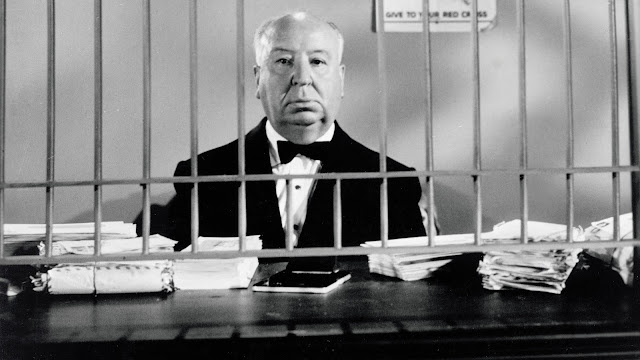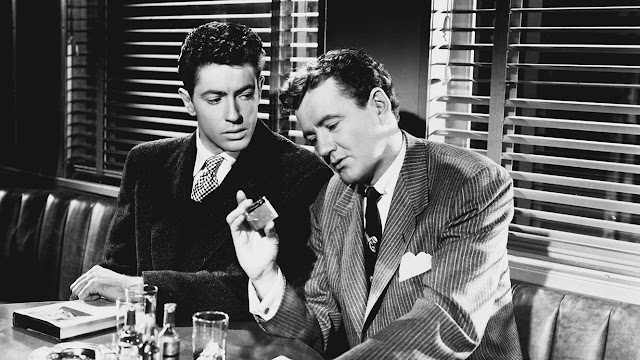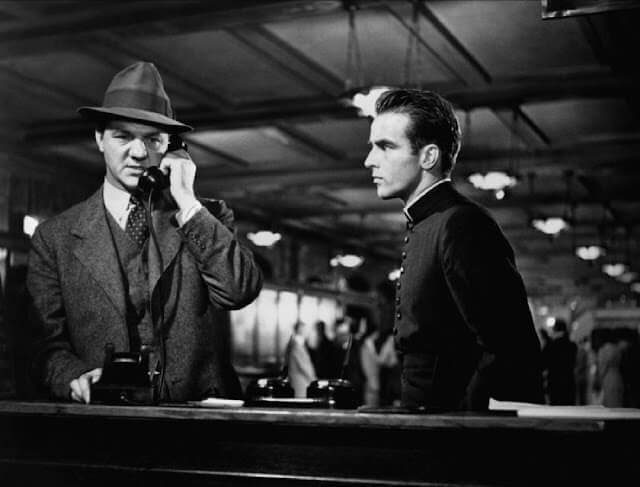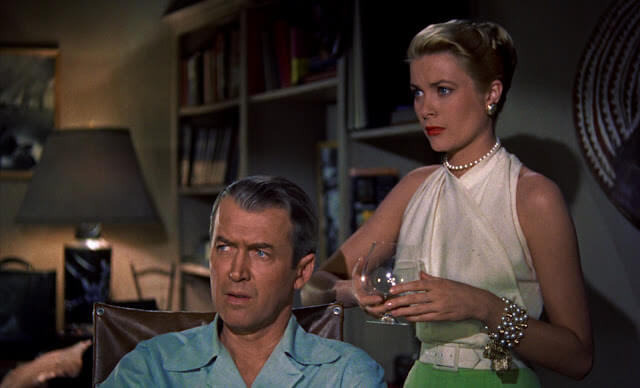Crime, mystery, suspense. 15 BEST ALFRED HITCHCOCK MOVIES

There is no other director like Alfred Hitchcock who has had such a huge impact on future generations. Today, virtually any gripping film can be called a hitchcockian thriller and everyone knows what it’s about. It’s as if he was the originator of the genre. He, however, from the thriller, which was a lower-class genre, brought out all the quintessence, shaped it so strongly that the genre began to be associated with a real cinematic experience, that is, a generator of suspense, emotion and fear. It’s difficult to count the director among the masters of detective fiction, because detective fiction is associated with puzzles, and Hitchcock wasn’t interested in puzzles. He was concerned with the effect of suspense, which is the hallmark of a thriller. In his view, suspense is not achieved with final twists, but by grading the tension throughout the film, thus laying out the various cards slowly, even if it means giving the identity of the murderer too early.
In my mind I built false images and sat in front of them. I never had the courage to demand the truth.
> Daphne du Maurier, Rebecca
5. Stage Fright (1950)

Hitchcock’s first colorful works, Rope (1948) and Under Capricorn (1949), were total failures at the cinema box office. They were also the only pictures made under the banner of the Transatlantic Pictures label, founded by Alfred Hitchcock and Sidney Bernstein. The partnership failed, and while the aforementioned films are rated better today, it was a failure that was fully justified. Excessive theatricality and a heavy focus on the formal side instead of intrigue resulted in bankruptcy. Fortunately, this didn’t stop Hitchcock’s career, and he set his next film in London, including at the prestigious theatrical academy of the Royal Academy of Dramatic Art. Although today this film isn’t well remembered, it’s worth knowing, because the features of Hitchcock’s work here exemplarily combine into a neat whole. Using elements of melodrama and detective fiction, the director portrays a hypocritical society with his keen and ironic eye. It’s significant that by showing lies he also cheats, by including a flashback to confuse the viewer. The tension has been created very ingeniously, motifs have been introduced that are the key to interpretation, for example, the motif of the theater symbolizing interpersonal contacts full of insincere confessions, artificial words and acting tricks. The film starred Marlene Dietrich, but my words of appreciation must go to Jane Wyman, who, fresh from winning an Oscar for Johnny Belinda (1948), once again shone with talent, credibly playing the character of… a novice actress.
6. Strangers on a Train (1951)

This movie has weaknesses in my opinion, such as the finale, which employs an idiotic twist for better effect, but there are also many pluses. The theme taken from Patricia Highsmith’s novel and turned into a screenplay by Raymond Chandler makes this work a memorable and oft-quoted production. However, the director also proves his creativity by executing some scenes masterfully, bringing out their potential, creating from simplicity something remarkable that will become a source of inspiration. The discovery of the year became cinematographer Robert Burks – his style of work so appealed to the director that they decided to continue working together. It was no coincidence that Burks was behind the camera of Hitchcock’s most technically perfect films – when the director had an idea for an unusual shot, this cinematographer knew exactly how to realize the idea. Together they made twelve films. But if today’s viewer remembers anything from Strangers on a Train, it’s unlikely to be the interesting shots, but the wonderful performance of Robert Walker, who in the role of Bruno is an extremely intriguing character. Unfortunately, this was one of the last roles of this actor, he died in 1951.
7. I Confess (1953)

By making the main character a priest who becomes entangled in an affair with a woman, Hitchcock hook about on social taboos and provoked protests from the Puritan community in the United States. And in some countries the film was banned. This only strengthened interest in the film, with the director explaining that he was primarily interested in the inner conflict of the character played by Montgomery Clift. He is torn between social and priestly duty. Social duty orders him to hand over a murderer who has confessed to the crime. Priestly service, however, tells him not to do so, because the secret of confession is a sacred thing. This attitude leads to suspicion, anxiety and reflection. Using an idea from the French play Our Two Consciences (Nos deux consciences, 1902) by Paul Anthelm, the British filmmaker sought to answer the question of whether there is one right choice, one conscience. The strength of the film lies not in the formal side, but in the story, which provokes thought, but doesn’t provide a clear answer. Reality is too complicated, nothing is simple and clear.
8. Dial M for Murder (1954)

Although in the 1940s Hitchcock became convinced that the rule of three unities didn’t attract audiences to theaters, even despite a great cast, he was not about to give up. In 1954, he completed two films that were different from the TV shows of the time only by their color. Well, maybe not exactly, because Dial M for Murder was supposed to attract with the use of three-dimensional technology, but today it’s not the biggest attraction. The director carefully focused on intrigue, once again exploring the phenomenon known as a perfect murder (which is how Andrew Davis’ successful remake was titled, by the way). The story was adapted from a play by Frederick Knott (the same one who later wrote the excellent Wait Until Dark).
Hitchcock succeeded in hiring the author of the original as a screenwriter and made sure to preserve the play’s characteristic intimacy. A suspenseful chess game is played in a limited space, where cunning, intelligence, the ability to pick up details, and the ability to draw conclusions are important. This is a perfect example of a film in which the tension comes not from the fact that it’s difficult to predict the solution, but from the fact that the viewer knows much more than the characters. He knows where the exit from the maze is, which some want to discover, while others try to prevent it. Not coincidentally, an important prop that changes the whole situation is the key – a simple symbol signifying the solution to the mystery. Dial M for Murder features superb acting, and one can only regret that Ray Milland didn’t appear again with this director. It’s also worth noting the actor playing the role of Inspector Hubbard. Englishman John Williams also played this character on Broadway and in the 1958 TV version. He worked with Hitchcock on three theatrical films and was a frequent guest on Alfred Hitchcock Presents – including the role of his wife’s murderer in the episode Back for Christmas (1956).
9. Rear Window (1954)

On the surface, it seems that when he made Rear Window, the director had a similar idea as with the film Dial M for Murder. An intention based on the fact that, inspired by a short literary work, he wanted to create something intimate but suspenseful. However, these films differ, presenting a different perspective on an act that begins with the letter M. In the production titled Dial M for Murder, the viewer absorbs the intrigue with his or her eyes, as if watching a performance in a theater, somewhat from a distance, observing the characters meandering through a maze of conspiracies, lies and devious traps. Rear Window absorbs the viewer more, because here we have the point of view of a particular character. We take on the role of the protagonist played by James Stewart and observe surroundings from one place, chained to an armchair, but not 100% sure if our suspicions about the neighbor across the street are correct.
The film is a screen adaptation of Cornell Woolrich’s short story It Had to Be Murder (1942). This co-creator of the noir trend (thanks to his excellent novel Phantom Lady) also became a co-creator of one of Hitchcock’s most famous films. Screenwriter John Michael Hayes introduced (perhaps at the director’s behest) female characters that were not present in the original. This allowed not only Grace Kelly, but also Thelma Ritter to excel. But it was James Stewart who had the most difficult task, because, according to the director’s conception, he was to appear in every scene. For one hundred and ten minutes he had to keep the viewer in front of the screen. His charisma, experience, spontaneity were invaluable. However, the director wouldn’t have been himself if he had put all the responsibility on the shoulders of one person, so he made sure that the show was attractive, using a lot of interesting camera shots, as well as preparing an impressive finale. For this he hired John Fulton, who used a simple blue screen trick.

